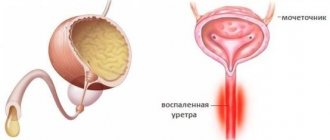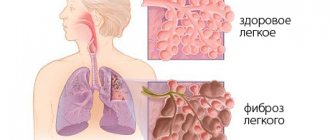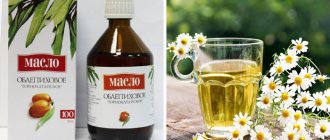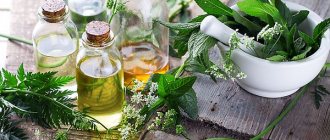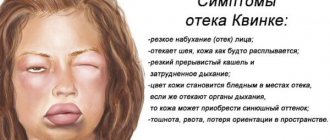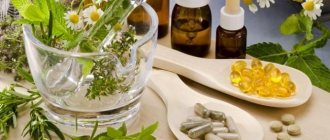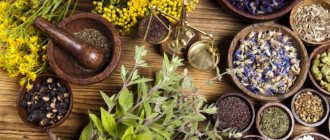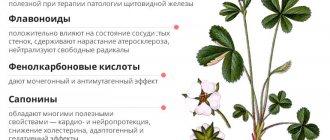What is endometritis
Doctors call the inflammatory process that occurs on the surface of the mucous membrane of the female uterus endometritis. Inflammation covers a specific area or spreads to the muscle layer, affecting almost the entire area of the reproductive organ.
Endometritis occurs in acute or chronic form. The severity of the pathology determines how effective a particular treatment will be. Dangerous forms of endometritis are usually eliminated using traditional methods of treatment - physiotherapy, drug therapy based on the use of strong antibiotics.
Mild forms of pathology are successfully treated with traditional medicine, although many experienced doctors successfully combine these methods with drug treatment. Lack of treatment for uterine endometritis is unacceptable.
Treatment of chronic endometritis with folk remedies
Inflammation of the endometrium (uterine lining) is endometritis. The disease can be a consequence of difficult childbirth, abortion, or previous infectious diseases. Pathology requires timely, qualified treatment. In its absence, the disease becomes chronic. Treatment of endometritis with folk remedies is an additional measure to prescribed drug therapy.
Causes of development of chronic uterine endometritis
The mucous membrane of the female uterus often becomes inflamed due to:
- difficult childbirth;
- incorrect or frequent abortions;
- due to an incorrectly installed IUD or placement of an infected intrauterine contraceptive device;
- development of infectious, fungal, bacterial diseases;
- sexual intercourse during the menstrual cycle;
- lack of hygiene;
- frequent douching;
- using tampons;
- weakened immune system.
The inflammatory process develops due to the attack of pathogenic microflora (fungi, bacteria, infection, protozoan parasites).
Endometritis concept
Endometritis is an inflammatory process that develops in the mucous membrane of the uterus. The cause of the disease can be fungi, protozoan parasites and bacteria. Pathology can be a consequence of difficult childbirth or abortion. The lack of qualified, timely treatment causes the development of chronic endometritis.
The chronic form of pathology can develop for a number of other reasons:
- violation of intimate hygiene rules;
- using tampons during menstruation;
- sexual intercourse during menstruation;
- the presence of infections in the external genital tract;
- violation of douching rules;
- dysbiosis developing in the vagina;
- complications after childbirth.
Phytotherapy
Calendula-based oil
Methods for treating uterine endometritis with folk remedies involve many techniques, for example, herbal medicine and treatment using drugs made from medicinal herbs.
Highly effective:
- red brush;
- hog uterus;
- celandine;
- sage;
- ivy leaves.
However, despite the effectiveness of herbal medicine, any treatment must be agreed with the attending physician. Each herb has its own unique effect on the body and its use is often prohibited during complex drug treatment.
Red brush
In common parlance, the plant called red brush is called Rhodiola rosea tetramerous (four-part, four-cut). The plant grows on the slopes of the Altai Mountains.
The chemical composition is very diverse - this determines the oncoprotective, anti-infective, anti-inflammatory, adaptogenic effect on the body. Thanks to these properties, decoctions, ointments, and tinctures help in the treatment of endometritis.
The traditional method of preparing decoctions of red brush for oral use: grind 2 roots, pour half a liter of boiling water, boil for a quarter of an hour, cool. Drink half a glass three times a day before meals.
Hog queen
Ortilia one-sided, in common parlance “hog uterus”, reduces inflammation of the mucous membrane. The rich biochemical composition has antimicrobial, hemostatic, hormonal, and antitumor effects on the organ. In the acute form of chronic endometritis, the boron uterus is ineffective.
Option for use: infuse the dry herb in 200 ml of alcohol in a volume of two tablespoons for about a month. After straining, take 21 days, three times, orally before meals, diluting 30 drops of tincture into half a glass of water.
Attention! The use of any medicinal plant has a lot of contraindications, so prior consultation with a specialist is necessary.
Celandine
Celandine herb has medicinal properties. In the treatment of uterine endometritis, the most popular is to take a decoction prepared in the following way: pour two tablespoons of a dry plant into two glasses of boiling water. After two hours, “celandine tea” is considered ready. Drink a quarter glass daily before meals. The course of treatment should not exceed two weeks.
Douching is widespread, helping to relieve inflammation, heal wounds, and destroy pathogenic microflora. Traditional medicine specialists, when fighting uterine endometritis, recommend inserting suppositories prepared at home or ready-made pharmaceutical ones made from celandine extract.
Sage
Sage is highly effective in relieving inflammation of the uterine mucosa. Linden blossom enhances the properties of sage, so the herb is often used in combination. Under the influence of a large number of phytohormones contained in these plants, the endometrium is quickly restored, the inflammation process is blocked, and bleeding is reduced.
Traditionally, sage and linden blossom are combined in equal parts, take a tablespoon of the dry mixture and pour 0.5 liters of boiling water. After infusion for an hour, take ½ orally no more than 4 times a day before meals. Treatment is carried out for no more than 12 days.
ivy leaves
Tinctures from any part of the ivy plant are highly effective for endometritis. The roots, leaves, stems are crushed and dried. Take a couple of spoons of the mixture, pour boiling water (1 glass) and take it orally before meals every day for two weeks.
This composition will help relieve inflammation of the mucous membrane, stop bleeding, have an antibacterial, absorbable, analgesic, wound-healing, and immunostimulating effect.
Herbal medicine in the fight against endometrium
Herbal medicine in the fight against endometrium
Hog queen
Borovaya uterus is a very useful plant that effectively cures many female ailments. The substances that make up the plant help normalize hormonal levels in a woman’s body. Decoctions from this plant reduce the proliferation of the mucous layer of the uterus, relieve pain and reduce bleeding, which is a common symptom of enlarged endometrium.
It is recommended to take this herbal remedy for several months in a row. The decoction is prepared as follows: it is recommended to brew 2 tablespoons of crushed dry plant for 300 ml of water. This is a daily dose of medication, which should preferably be divided into several doses.
Borovaya uterus and bergenia root
There is also another effective recipe based on boron uterus and bergenia root. These plants have anti-inflammatory and hemostatic effects. You need to take a decoction with two medicinal herbs for 3 weeks in a row, then it is advisable to take a break for 10 days.
Hog queen
The medicine is prepared as follows: crushed bergenia root (10 grams), boron uterus (8 grams) are brewed with 2 cups of boiling water and then brought to a boil in a water bath. It is advisable to leave the decoction for several hours. You need to take the product according to the following scheme: in the morning - 30 grams, at lunch - 50 grams, before bedtime - 70 grams.
Fireweed for the treatment of uterine endometrium
This plant contains a whole complex of organic acids, tannins and flavonoids, making it effective in the treatment of female ailments. A decoction of the plant helps reduce blood loss and pain during menstruation. The herb helps reduce endometrial growth due to its anti-inflammatory properties.
Fireweed
The medicine is prepared as follows: brew 1.5 tablespoons of dry fireweed for a glass of boiling water. Then the mixture is heated in a water bath for 20 minutes; it is advisable to steam the plant over low heat, preventing the liquid from boiling. You need to take the medicine 3 times a day, 20 ml. It is recommended to dilute the decoction in tea or water. Leftover medication can be stored in the refrigerator. The full course of treatment is 2 months.
Hirudotherapy for endometritis
Hirudotherapy is widely used to relieve inflammation of the uterine mucosa. The saliva of leeches contains certain substances that help relieve blood stagnation, inflammation, and have an antibacterial effect.
It is forbidden to carry out the procedure yourself; this should only be trusted to specialists. Search annelids are placed on the area of the lower abdomen, and leeches are additionally placed on the inner walls of the vagina itself. The course of treatment is strictly individual. Half an hour after establishment, the leeches spontaneously fall off, the outer area of the body is bandaged at the site of the bite, and processed sterilely. Clean tampons are inserted into the vagina.
It is worth remembering that hirudotherapy has some contraindications: low blood clotting, low blood pressure, cancer, anemia, individual intolerance to leech bites.
Decoctions for douching based on oils and herbs
Douching with herbal decoctions and solutions of oils normalizes the vaginal microflora and relieves inflammation:
- To prepare such a solution from red brush, you need to boil the crushed root of the plant in a glass of water (boil for at least 15 minutes), and after cooling, dilute a teaspoon of the broth in half a liter of cold water. Douche a week after menstruation, at night.
- Combine equal parts red brush and oak bark, take three tablespoons, pour boiling water, cook for 20 minutes, cool. Dilute a teaspoon of decoction into a glass of water.
- Dry herb purity in the volume of a tablespoon is poured into ¾ cup of boiling water and infused. The course of treatment is up to 2 months, daily in the morning.
- Sea buckthorn oil in the amount of a tablespoon is diluted in a glass of water, treatment daily for up to 10 days.
- Dry celandine herb is combined with chamomile in a ratio of 1:3, poured with a glass of boiling water, and used after 30 minutes. The procedures are performed daily for about a month.
It is advisable to combine douching with drug treatment or taking decoctions prepared from medicinal plants.
Note! Malaise that appears during treatment may indicate that this technique is not suitable for you.
Treatment of endometritis with folk remedies
Treatment of endometritis with herbal roots
The girl began to feel nagging pain in her lower abdomen.
I thought it wasn’t all that serious, maybe I just had a cold. But it turned out that she was suffering from chronic endometritis because she was not treated in time. She began to be treated with pills prescribed by the doctor. But then I read a folk method for treating endometritis in the newspaper and decided to treat myself with it. Take equal proportions of Leuzea and marshmallow roots, wormwood, lavender, sweet clover, dried sweet grass, blueberry and nettle leaves, and pine buds. Grind and pour two tablespoons of the mixture into a thermos with half a liter of boiling water. Let sit overnight. Take a third of a glass three to four times a day. The course of treatment for endometritis is two months.
Then prepare another medicine. Take equal quantities of the herbs of knotweed, chicory, thyme, calendula flowers, coltsfoot and bearberry, angelica and dandelion, and bergenia root. Prepare the collection in the same way as the previous one. Take a third of a glass three to four times a day. The course of treatment is two months.
In a couple of weeks you will feel much better. But in order to fully recover, it is necessary to take both collections for a long time, two months each, alternating them with each other.
There is another decoction that you can also take for treatment, if necessary. Take in equal proportions the herbs viburnum, shepherd's purse, mint, motherwort, thyme, viburnum bark, mantle leaf, chamomile flowers, and radiola root. Prepare the decoction in the same way as the previous ones. You also use tampons with sea buckthorn oil. Insert them at night. The course of treatment is ten procedures.
St. John's wort treats endometritis
When I was diagnosed with chronic endometritis, I decided to be treated with folk remedies. My grandmother suggested that St. John's wort would help. I brewed one tablespoon of St. John's wort (you can buy it at the pharmacy) in a glass of boiling water and boiled for fifteen minutes. Then the broth is filtered and drunk a quarter of a glass three times a day.
Within a week, all the unpleasant sensations disappeared. Now, if I feel like I’m getting sick again, I immediately start drinking the decoction.
But St. John's wort is contraindicated for those who suffer from hypertension, and it should not be taken at high temperatures.
Treatment of endometritis with tincture of lemon, orange and onion
Take one teaspoon of onion tincture, half a lemon, half an orange, and 1/2 tablespoon of sugar. Wash the orange and lemon, dry and grind in a meat grinder. Add onion tincture to this composition and then tbsp. spoon of sugar. Mix well until it becomes a paste.
For endometritis, take one teaspoon three times a day. The course of traditional treatment for endometritis is at least a week.
Treatment of endometritis with herbs
Take a teaspoon of coltsfoot leaves, calamus rhizomes, stinging nettle leaves, horsetail herb, common thyme herb, two teaspoons of brittle buckthorn bark, St. John's wort herb.
Grind and mix all these herbs. Eight teaspoons of the collection must be poured with two or three glasses of boiling water. Then wrap the container with the broth and leave it to steep in a warm place for half an hour. Then strain the medicine. Drink half a glass three times a day. To make the taste better, you can add a little sugar or honey.
Source: Newspaper Healthy Lifestyle, all-Ukrainian newspaper-healer “Granny”
Source
Wraps for endometritis
When treating inflammation of the uterine mucosa, specialists often recommend performing therapeutic wraps in addition to complex procedures. The procedure is performed using therapeutic mud (3 kg of the substance is taken) and 2 tablespoons of calendula flowers. Calendula flowers are first brewed like tea with a glass of boiling water, and then, when the plant is infused and gives up all its medicinal substances to the liquid, the dirt is filtered and diluted with this water, achieving homogeneity and elasticity - kneaded like dough. Instead of brewing, calendula flowers can be boiled directly, allowing the liquid with the plant to boil for about a quarter of an hour.
Therapeutic mud is applied in a thin, even layer to the lower abdomen and perineal area. The whole thing is wrapped in cling film and an additional warm towel to get a warming effect. Wash off after 30 minutes. The frequency of the procedure usually does not exceed 10 times, but wraps are done daily, in some cases with a daily interval.
Treatment of endometritis according to Bolotov
Doctors often recommend treating uterine endometritis using Bolotov’s method. This is a kind of douching, but according to a certain rule:
- A tincture is prepared based on the rhizome of marsh cinquefoil (250 g) and 4 glasses of 6% apple cider vinegar. The plant is poured with vinegar, the container is tightly covered and stored for about 14 days in a cool, dark place. Then take a tablespoon of the resulting liquid, dilute it in two glasses of warm water and use it.
- douche at night, and 10 minutes after douching, repeat the procedure, only using absolutely clean water.
Usually a course of five days is enough to eliminate a mild form of pathology. Reduce the unpleasant symptoms of chronic and severe inflammation.
Home methods of treating chronic form
Traditional medicine offers a wide variety of means and forms of treatment of inflammatory processes in the organs of the female reproductive system. They have varying degrees of effectiveness and are used in the absence of individual intolerance to the components.
Decoctions for douching and medicinal tampons
In the complex therapy of chronic endometritis, an effective additional means for relieving the consequences of the inflammatory process are douching with decoctions of medicinal herbs and tampons soaked in various medicinal compounds:
- Sea buckthorn oil. A cotton swab is soaked with it and inserted into the vagina overnight, the procedure is repeated for a week.
- A decoction of plant materials for washing. For preparation, walnut leaves, horsetail, damask leaves and knotweed herb are used. A tablespoon of the mixture is brewed with half a liter of boiling water and left in a water bath.
The strained broth should be washed twice a day.
- In the same way, a solution for vaginal douching is prepared. A mixture of pine buds, eucalyptus, blueberry leaves and meadowsweet inflorescences is brewed. Douching should be done once a day before bedtime.
- Vaginal tampons can be soaked in juice from aloe leaves and can be left in the vagina for 4 hours. The procedure should be carried out within a week.
- Tampons soaked in a mixture of St. John's wort and sea buckthorn oil are also effective; they can be left in the vagina overnight.
- You can mix aloe juice and olive oil in equal proportions; this mixture can be used to soak tampons after five days in the refrigerator.
- Celandine decoction. Pour one teaspoon into 50 ml of boiling water and boil for five minutes. Soak the tampon with the resulting decoction and leave overnight.
- Tampons can be soaked in mummy dissolved in milk with the addition of honey; this product can be used for 10 days, leaving the tampon in the vagina for three hours.
- A decoction of immortelle, elderberry and oak bark. For a liter of boiling water, take five tablespoons of the plant mixture and brew it in a thermos for 40 minutes. The decoction is used for vaginal douching.
- An infusion of strawberries, cornflower flowers, wintergreen herbs and lemon balm. The medicinal mixture is brewed with boiling water and infused for an hour. The resulting tincture is taken orally several times a day, 100 ml.
- In the same way, you can prepare and consume an infusion of chamomile, rosehip and black currant.
- You can take sitz baths with a decoction of bay leaves.
Please note that vaginal tampons and sitz baths should never be used during menstrual bleeding.
Among the traditional medicine recipes for the treatment of chronic endometritis there are wraps for the lower abdomen. You can use the following recipe: brew 2 tablespoons of calendula with a glass of boiling water, let the broth brew, then strain.
Take 3 kg of medicinal mud, pour the resulting decoction into it and stir well. Then the mixture should be applied to the lower abdomen, wrapped in plastic wrap, and covered with a warm scarf on top. It is recommended to keep the wrap for about half an hour, then rinse with plenty of water. To obtain a therapeutic effect, 10 procedures are necessary.
To learn how to make a gynecological tampon, watch this video:
Treatment of endometritis according to Bolotov
This technique is based on the use of tincture for vaginal douching, which is prepared according to the following recipe: you need to take 125 grams of marsh cinquefoil rhizome and 2 cups of 6% apple cider vinegar. Carefully crushed roots are poured with vinegar and infused for 14 days. After this, one tablespoon of the resulting tincture is diluted with two glasses of water and heated to body temperature.
10 minutes after the procedure, you need to do another copious douching with regular warm water.
Douching should be done once a day before bedtime. The course of treatment using this method lasts five days.
Prevention
Measures to prevent uterine endometritis are as follows:
- maintaining intimate hygiene;
- exclusion of unplanned pregnancy;
- prevention of sexually transmitted pathologies;
- compliance with treatment after childbirth, abortion, if necessary.
At the first symptoms of inflammation of the uterine mucosa, you should immediately seek help from specialists, and use traditional methods of treatment only if the doctor considers them appropriate.
Traditional methods of treating uterine endometritis are considered widely popular due to the high efficiency and availability of the ingredients used. However, such methods have a lot of contraindications, and when preparing medicinal products, women often make mistakes, which is why it is better not to get carried away with such treatment without prior consultation with a specialist.


